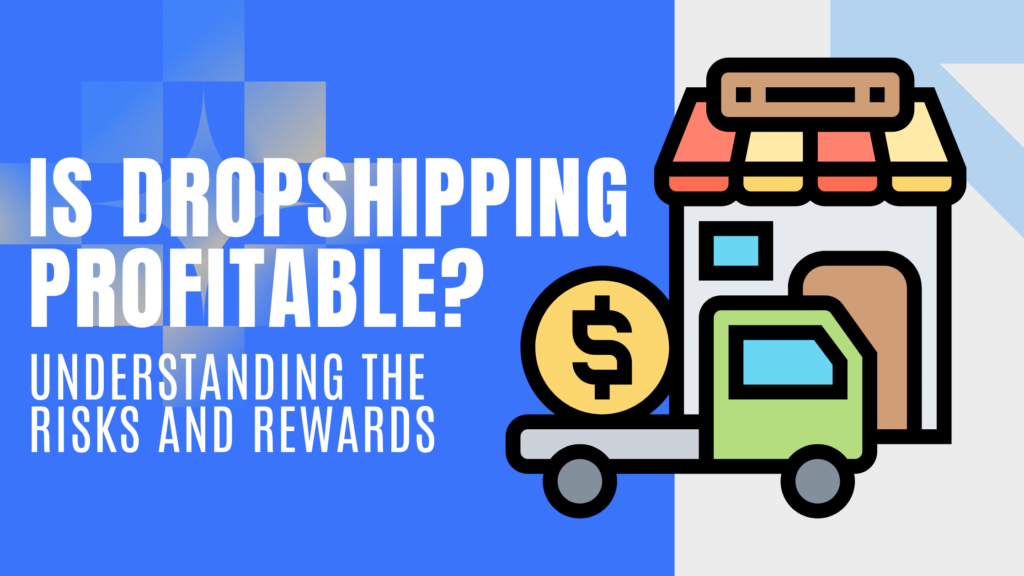Is Dropshipping Profitable? Understanding the Risks and Rewards
Dropshipping has emerged as a popular and lucrative business model. With its unique advantages and potential for high profits, dropshipping has attracted the attention of entrepreneurs and established retailers alike. But is dropshipping really profitable? In this guide, we will explore the world of dropshipping, explore its potential rewards, and shed light on the risks that come with this business model.
Understanding the Potential of Dropshipping
Dropshipping is an ecommerce fulfillment method that allows merchants to expand their product offerings without holding inventory. The merchant acts as the middleman between the buyer and the supplier. The merchant handles the sales and marketing, while the supplier takes care of order fulfillment and shipping.
Dropshipping has gained significant traction in recent years, and its potential for profitability is undeniable. According to industry forecasts, the dropshipping market is projected to reach a staggering 476.1 billion U.S. dollars. The global dropshipping market is also expected to experience a compound annual growth rate of 23.4% from 2023 to 2030, far surpassing the standard growth rates of other industries.
One of the key advantages of dropshipping is its forecasting agility. Unlike traditional retail models that require merchants to order inventory in bulk, dropshipping allows merchants to purchase supply as needed. This flexibility enables businesses to respond quickly to changes in demand and avoid the risk of holding excess inventory.
Another benefit of dropshipping is the ability to expand product assortment without the need for additional warehouses. By sourcing suppliers to dropship products with unique fulfillment needs, merchants can cater to a wider range of customer preferences and tap into new markets. This diversification can lead to increased sales and higher profits.
Calculating Profits in Dropshipping
When it comes to making money in dropshipping, the potential for profitability largely depends on various factors such as pricing strategies, product selection, and operational efficiency. While dropshipping margins typically range between 15-20%, it’s important to note that profitability can vary based on individual business circumstances.
To maximize profits, it’s crucial to keep a pulse on demand and add dropship products that are high in demand or trending. By offering products that customers are actively seeking, you can increase sales and generate higher profits. Additionally, pricing products strategically is essential. Finding the balance between setting prices high enough to ensure a healthy margin and low enough to remain competitive is key to driving profitability.
Subscriptions can also be a profitable avenue in dropshipping. By offering subscription options, you can secure recurring revenue and ensure a steady stream of orders. Upselling via bundles and cross-selling complementary products are effective strategies to increase the transaction value and boost profitability.
Risks and Challenges in Dropshipping
While dropshipping offers significant potential for profitability, it’s important to consider the risks and challenges associated with this business model. One of the primary concerns is the quality of suppliers. When relying on dropshipping, your brand’s reputation is directly linked to the products provided by your suppliers. Thoroughly vetting suppliers and setting performance requirements is crucial to ensure the quality of products and maintain customer satisfaction.
Shipping delays and inventory management are additional challenges that can impact profitability in dropshipping. Since the supplier is responsible for order fulfillment and shipping, any delays or errors in the process can lead to dissatisfied customers and potential revenue loss. Implementing effective systems and processes to manage inventory and ensure timely delivery is essential.
Choosing Reliable Suppliers
To mitigate risks and ensure profitability in dropshipping, choosing reliable suppliers is paramount. Thoroughly researching and vetting potential suppliers is crucial to maintain product quality and timely delivery. Conducting background checks, reviewing product samples, and setting clear expectations through service level agreements (SLAs) can help establish a strong partnership with trustworthy suppliers.
Managing Inventory and Order Fulfillment
Effective inventory management is key to running a profitable dropshipping business. By closely monitoring stock levels and demand patterns, you can avoid stockouts and prevent excess inventory. Utilizing inventory management software can streamline this process and provide valuable insights into product performance and future demand.
Order fulfillment is another critical aspect of dropshipping. Establishing efficient processes and clear communication channels with suppliers can help ensure timely order processing and shipping. Regularly reviewing supplier performance and addressing any issues promptly is essential to maintain high customer satisfaction levels.
Optimizing Pricing Strategies
Pricing plays a vital role in dropshipping profitability. Setting prices too high can deter customers, while prices that are too low may result in reduced profit margins. Conducting market research, analyzing competitor pricing, and monitoring customer demand can help determine optimal price points. Regularly evaluating and adjusting prices based on market trends and customer feedback is crucial to remain competitive and maximize profitability.
Building a Strong Brand
In the competitive world of ecommerce, building a strong brand is essential for long-term success and profitability. Establishing a unique value proposition, developing a compelling brand story, and creating a visually appealing website are key elements of brand building. Consistent branding across all touchpoints, from product listings to customer communications, helps build trust and loyalty among customers.
Effective Marketing and Customer Acquisition
To drive profitability in dropshipping, effective marketing strategies are essential. Utilizing various digital marketing channels, such as search engine optimization (SEO), social media marketing, and influencer partnerships, can help increase brand visibility and attract potential customers. Implementing targeted advertising campaigns and optimizing product listings for relevant keywords can also boost customer acquisition and drive sales.
Providing Exceptional Customer Service
In the world of ecommerce, exceptional customer service is crucial for success. Timely and personalized communication, hassle-free returns and exchanges, and efficient resolution of customer inquiries and complaints are all vital components of exceptional customer service. By prioritizing customer satisfaction, you can foster customer loyalty, generate positive reviews, and drive repeat business, ultimately contributing to profitability.
Continuous Improvement and Adaptation
To thrive in the ever-changing landscape of ecommerce, continuous improvement and adaptation are essential. Regularly analyzing key performance indicators (KPIs), gathering customer feedback, and staying updated on industry trends can help identify areas for improvement and drive business growth. Embracing new technologies and implementing innovative solutions can also enhance operational efficiency and contribute to increased profitability.
Conclusion
In conclusion, dropshipping offers significant potential for profitability in the world of ecommerce. By leveraging the advantages of dropshipping, such as forecasting agility, optimized warehouse management, regional expansion, and product assortment diversification, businesses can tap into new markets, expand their product offerings, and drive higher revenues. However, it’s important to carefully consider the risks and challenges associated with dropshipping and implement effective strategies to mitigate them.
By choosing reliable suppliers, managing inventory and order fulfillment efficiently, optimizing pricing strategies, building a strong brand, implementing effective marketing strategies, providing exceptional customer service, and continuously improving and adapting, businesses can maximize profitability and thrive in the competitive dropshipping landscape.





